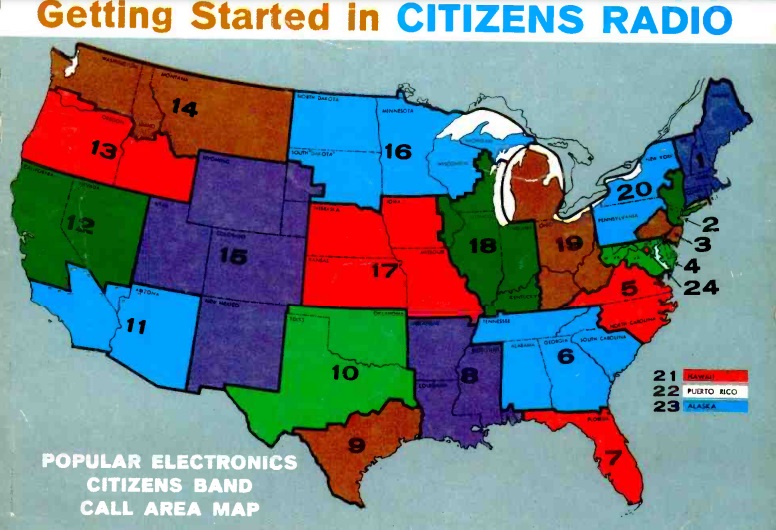 By 1961, it was clear that the 11 meter Citizens Band was a hit. Popularity hadn’t hit the frenzied levels of the 1970s, but it was becoming popular, especially by those with some background in electronics. The 27 MHz band had been allocated to Class D CB in 1958, and in three years, much equipment was available on the market.
By 1961, it was clear that the 11 meter Citizens Band was a hit. Popularity hadn’t hit the frenzied levels of the 1970s, but it was becoming popular, especially by those with some background in electronics. The 27 MHz band had been allocated to Class D CB in 1958, and in three years, much equipment was available on the market.
The November 1961 issue of Popular Electronics carried a primer for those thinking about getting into CB radio, penned by prolific electronics writer Tom Kneitel. He gave basic advice on radios, antennas, operating, and licensing.
The article’s byline contains his CB call sign, 2W1965. CB calls at the time were in this format, starting with a number showing area of the country where licensed. The map showing those zones graced the magazine’s cover. This was followed by the letter W, and then a serial number.
A few years later, the format changed to three letters (later four) starting with K, followed by four digits.

Do you have any opinion on CBs v. GMRS radio?
I’m running GMRS radios in my vehicles so I can communicate with hand held FRS radios, which I started with. It seems like this is becoming increasingly common.
As you’ve discovered, GMRS can be an excellent option, especially because it can communicate with the cheap FRS radios.
The unfortunate marketing mistake was that they came out with the cheap combination GMRS-FRS radios with 22 channels. Unfortunately, since they include all 14 FRS channels, they are not allowed to have an external antenna connection, which is the one thing that really makes GMRS superior. But with a more expensive GMRS radio with external antenna, as you’ve probably discovered, it’s an extremely reliable system.
The main advantage of CB these days is how cheap the equipment is. For under $50, you can get an extremely good mobile radio. Since CB is now all but dead, that means that there is very little interference, and if you needed to communicate between two fixed locations of, say 20 miles apart, you could do it quite easily.